How to Choose
the best wallpaper
Wallpaper or grasscloth? Which wallpaper is best for a bedroom? Can you put wallpaper on a ceiling? Wallpaper for homes has made a big comeback in recent seasons, so read on to find our designers’ answers to your biggest wallpaper questions.
What kinds of wallpaper are there?
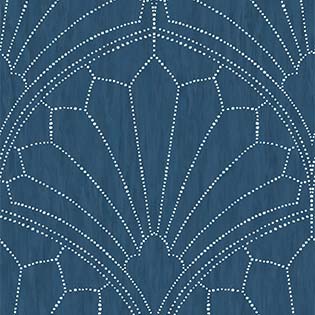
Paper wallpapers are what you think of when you hear the word “wallpaper.” They can have a variety of textures from matte to satin, as well as embellishments like raised threads and metallic details. Some papers are coated with acrylic to provide added durability.
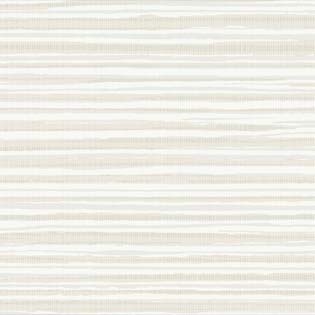
Nonwoven wallpapers are made from both natural and synthetic fibers and offer tear-resistant features.
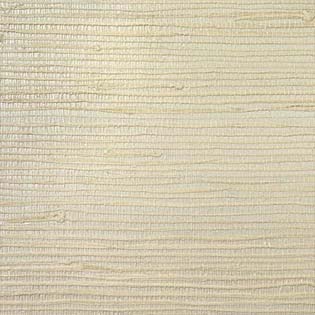
Grasscloth wallpapers are made using natural plant fibers joined by fine threads and then woven together. These have an organic, handmade look
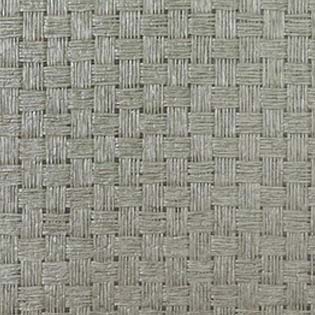
Paperweave wallpapers are made using fine threads of paper woven together for a visually soft, textured look. Ours are made using Forest Stewardship Council (FSC) certified paper substrates.
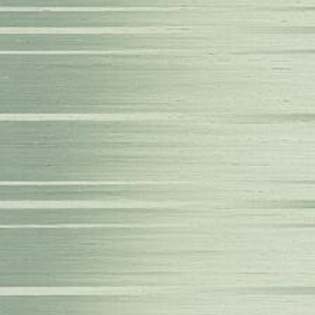
Vinyl wallcoverings in our collection are made from 20-ounce vinyl and are embossed to add textural and visual interest. This wallpaper alternative is very durable and easy to clean with a damp cloth.
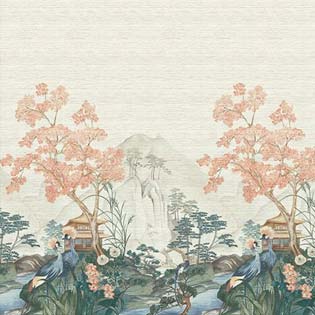
Wall murals are painterly scenes printed onto fine papers or textured substrates. They’re an easy way to add an artistic statement to an accent wall or entire room.
Glossary
Terms you should know before buying wallpaper online:
Single or double roll: A double roll of wallpaper has twice the amount of product as a single roll. All wallpaper rolls at Ethan Allen are double rolls.
Repeat: The interval at which your wallpaper’s pattern repeats vertically.
Match: Where and how patterns align between sheets of wallpaper. Your wallpaper installer will have a thorough understanding of the type of match your wallpaper uses.
A special point about grasscloth: Because each strip is made from unique fibers, all grasscloth is random match; each strip looks a little different from the one beside it. To minimize these differences, order all your grasscloth rolls at once rather than buying some now and some later. The ones you purchase later may come from a different dye lot, which would make the differences more noticeable.
In which rooms does wallpaper look best?
We think wallpaper looks great in nearly any room, whether you’re covering every wall or just creating an accent wall. Need a little inspiration? Swipe through some of our favorite wallpapers for ideas:
A note on kitchens and bathrooms: Not all wallcoverings are a good fit for humid rooms like these—especially grasscloths. Look for nonwoven papers, acrylic coated papers, or vinyl wallcoverings with wipe-clean surfaces; these wallpapers are more durable than their uncoated counterparts.
How to pick your wallpaper
Take account of your room’s architecture and natural light sources to choose your paper’s palette and pattern:
When deciding between covering a whole room or just an accent wall, consider these points:
A fully wallpapered room can be very dramatic, but overwhelming if not done right. To make it work, create a bolder look by pulling your favorite color from your room’s palette, or choose a neutral hue for an easy-on-the-eyes look.
Accent walls are a great place to add a new statement color or play with bold patterns in your space—and they’re less work! Draw inspiration from any furniture, artwork, or architecture that will share the wall with your wallpaper
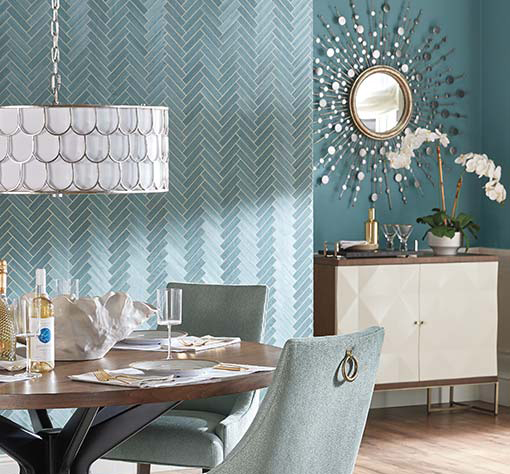
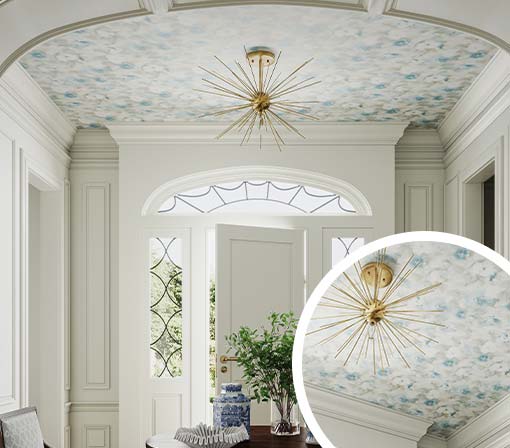
In smaller rooms, like bathrooms and petite studies, a vivid color or pattern may overwhelm the space. Paper an accent wall if you prefer a bold pattern in a small space; if you want to cover every wall, an Ethan Allen designer can help you find a wallpaper that strikes the right balance.
Feeling daring? Don’t forget the fifth wall in any space: the ceiling. Dark hues can make rooms with tall ceilings feel cozier, and light hues make ceilings appear higher. Large patterns on the ceiling can feel overwhelming, so stick with something smaller in scale.
How to measure your walls for wallpaper
When determining how many rolls you need for your project, start by measuring your space.
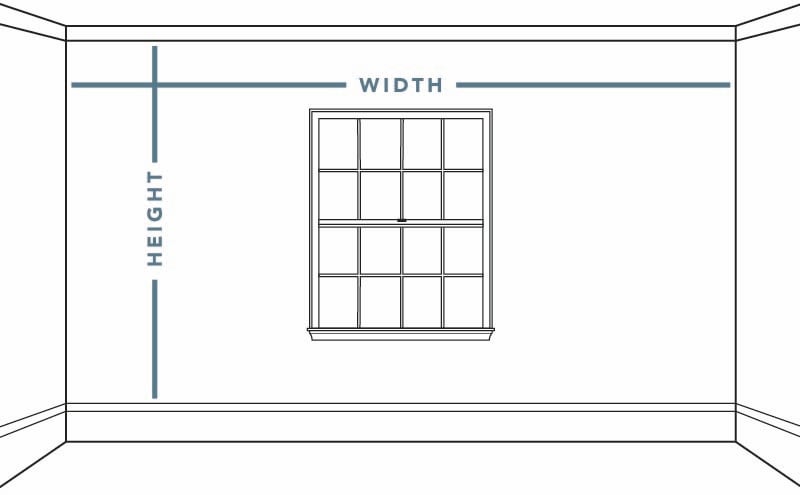
Measure each wall’s width, then multiply by the height of your ceilings less any molding you have. To keep things simple and ensure you have enough wallpaper, don’t subtract windows, doors, or cabinets.
Once you have your measurements, input them into our calculator. We’ll tell you how many rolls to order.
We always recommend ordering a few more rolls than you need. That way, you’ll have rolls of the same dye lot on hand if a wall gets damaged and you need to replace the paper, or if you want to cover another room in the same wallpaper.
How to hang wallpaper
We always recommend hiring an installer to hang your wallpaper. You’ve invested in paper you love—it’s worthwhile to invest in having it installed by a professional.
Wallpaper looks best on flat walls. If your walls are textured, your wallpaper installer will use something called a skim coat: a layer of composite that creates a flat base for hanging wallpaper.
Note that dark paint colors and textures like plaster and paneling can show through light-colored wallpapers. If that’s a concern for your space, talk with your installer about options for making your wallpaper look as intended.
Your installer will then clean your walls with various solutions depending on your current wallcovering, as well as remove old layers of wallpaper that may compromise your new wallpaper.
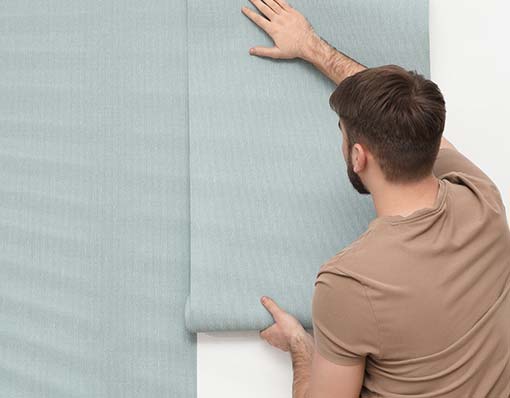
How to care for wallpaper
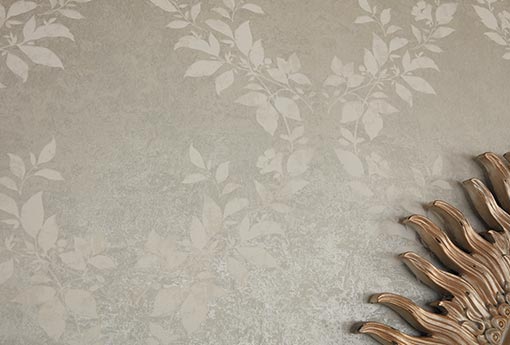
Most people don’t consider maintenance for their walls, but wallpaper can collect dust just like any surface in your home.
Take a look at the care instructions for the wallpaper you chose. Some, like washable wallpapers, are easy to clean with a sponge or damp cloth, but others require different care.
Cats love grasscloth— but maybe a little too much. If you’re worried about pet damage to textured wallpapers, it’s best to select a flat paper with an easy-clean coating.
How to remove wallpaper
How you remove your wallpaper depends on what type you buy. Especially if you’re renting, be very vigilant about how your wallpaper is designed to be removed—don’t lose your security deposit!
Strippable wallpapers are easily removed and leave minimal residue behind. Note that this is different from peel-and-stick wallpapers some other retailers sell, which is designed to trade lasting adhesive for the ability to peel it off your walls.
Wet removable wallpapers offer the best longevity, but they can only be removed with a liquid stripping agent. For obvious reasons, we don’t recommend this type of wallpaper for renters!
Let an Ethan Allen designer handle it all
Need a professional opinion? Our designers can help you find the best location for wallpaper, pick your palette, choose a stunning pattern, and manage your order from selection through installation. All you have to do is bring a desire for something new—they’ll handle the rest.
FIND YOUR DESIGNER >Did you find this useful?
